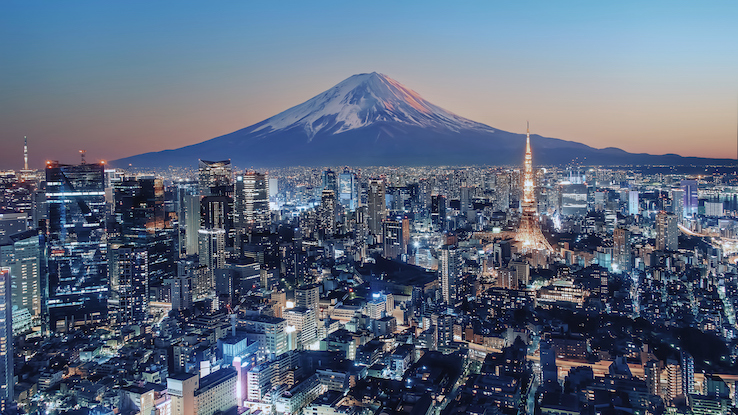Tokyo Travels: Exploring Japan’s Vibrant Cultures

Japan is renowned for its fascinating culture, and the country’s colorful capital city, Tokyo, is no different. From its famous cherry blossoms and historic landmarks to its unique cuisine and fashion subcultures, this sophisticated spot has always captivated visitors — and for good reason.
Cherry blossoms in the spring, and colorful foliage in the fall bring tourists to Japan in droves from April through November. If you’re looking to travel in the off-season, consider that the ume (Japanese plum trees) bloom in February, covering parks and temples throughout the city in splashes of vibrant pink. There’s never a bad time to visit Tokyo — and there’s plenty to experience when you arrive.
Before You Go- Visit Virtually
Technological innovations are changing the way we do all sorts of things each day. Now you can add “planning your vacation” to the list. We can’t think of a better way to narrow down your list of must-sees than to strap on a VR headset and get a taste of what Tokyo has to offer. And of course, if you’re still easing your way into the future, you can enjoy all of these videos on your laptop or smartphone as well.
In 2016, the Japan National Tourism Organization developed a full virtual tour of the entire country for armchair travelers to enjoy. “Japan: Where Tradition Meets the Future” showcases popular tourist spots around town, like the Tokyo Tower, the SEGA arcade and the Kawaii Monster Café, along with other cool attractions in surrounding cities. It’s an immersive experience that gives you a first-person view of city sights from the perspective of a person walking around on foot. Or you could take a virtual walk-through tour of the Tokyo National Museum, the largest museum in Japan, which houses over 100,000 culturally significant artifacts and exciting exhibits. You can also enjoy everyday Tokyo from multiple vantage points — whether you want to see trains, traffic or temples — on this extensive live stream network.
Where to Stay
Before you start searching hotel listings and browsing Yelp reviews, it’s a good idea to narrow down your search to a specific neighborhood or two. Tokyo is a sprawling city, and the vibe from one neighborhood to another can be starkly different. Consider staying in Roppongi if a thriving nightlife scene appeals to you. This neighborhood is also home to a variety of museums, including one of Asia’s largest contemporary art museums, the Mori Art Museum.
For a more historic, traditional location, consider the Asakusa neighborhood, home to the Sensoji Temple. You’ve likely seen photos of this temple before (like the one above), though photos often don’t do justice to the scale of this tourist attraction. You could easily spend a day browsing shopping stalls within the temple gates, picking up traditional souvenirs and tasty treats.
Kagurazaka, situated next to the Edo Castle, is one of two neighborhoods in Tokyo where you can still enjoy geisha shows and experiences. These experiences usually consist of dinner, during which a geisha will pour drinks and perform songs. It’s usually best to ask your hotel for assistance in booking these experiences. You could also opt to visit Kagurazaka in October, to take part in the Bakeneko Festival, when locals take to the street in costume to act out the Japanese folklore of cats developing supernatural powers.
What to Eat
Tokyo cuisine is praised the world over — the city has the highest number of Michelin-starred restaurants anywhere in the world, after all — and it’s a dining destination for foodies and executive chefs alike. It’s also a city filled with delicious, low-cost meals easily procured from convenience stores and vending machines. No matter your budget, there’s something delicious waiting for you in Tokyo.
For the adventurous eater (or the traveler who is carefully counting her yen), we recommend stopping by the Noodle Tours vending machine in Ota City, Tokyo to peruse the offerings there. This noodle vending machine was the first of its kind in Japan, and was launched initially as a way to support restaurants that were struggling to stay open amidst the pandemic in 2020. Since then noodle machines have popped up all over the city, some offering meals from Michelin-starred restaurants. These machines will pop out a frozen noodle pack that requires one pot of boiling water and about 20 minutes of patience to produce a bowl of soup that we think looks seriously scrumptious.
While ramen may be one of Japan’s most famous dishes, another noodle, soba, is perhaps nearest and dearest to Tokyo’s heart. These springy buckwheat strands are often eaten chilled and lightly dipped in a salty-sweet sauce called “tsuyu”. The owner-chef at the Michelin-starred restaurant, Tamawarai mills the buckwheat grains himself to make a noodle dish you’re not soon to forget.
And don’t forget dessert. If you’re visiting in the summer time, seeking out Kakigori (sweet shaved ice) would make for a simple and delicious adventure. Shimokita Chaen, a 2 minute walk from Shimokitazawa Station, serves theirs with a foamed Matcha syrup. Any time of year is a great time to enjoy some Wagashi (pictured above) as part of a traditional tea ceremony. These dainty treats come in a variety of forms, and are meant to artfully reflect the season.
After Your Getaway
If you fell in love with Tokyo on your trip, consider supporting various communities in Tokyo and surrounding areas in Japan. HandsOn Tokyo is a non-profit organization that brings together local residents and foreign volunteers to work with local charity organizations that benefit children with special needs, senior citizens and other social groups who need assistance. Visit the official website to learn how you can support the organization’s efforts, even from afar.
Check out these other Tokyo-based organizations, too; from combating childhood cancer to collecting and distributing food donations, you’re sure to find a cause that’s close to your heart.






